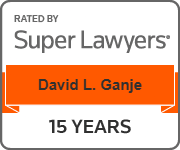I present the reader with a short discussion on legal problems the business and ag world now faces. I have seen this rodeo before. I have ridden the bronco. It hurts when you fall. (I prefer falling off of a motorcycle – the drop is less severe) Don’t kid yourself. Don’t act like the coronavirus effect on the region’s economy is something that will just pass. Yes, it will pass. But it will take a damn long time to pass. Further, this will be a depression, and one not known by history because of the intricate modern phenomenon of government regulations which are indelibly integrated into every aspect of the business and agricultural world. Those of you old enough will remember how long it took to get out of the 80s ag recession. I have seen and worked in two recessions in my career. And this one is bigger and quite distinct from either of those. Start now to plan. Start now to deal with the complicated financial problems in the ag and ranch world. They are here. A modern economy is not simple. It is an admixture of market stupidity, unresponsive government programs, bad banking regulations and management, and overall misjudgments by most everyone. Government won’t bail out the problem. Government might help some, but it is not the remedy. Government can’t foresee, can’t plan, can’t address and can’t correctly manage. I know, I have also worked for government.
So let’s start our review. Consider that when I use the term business it means those in business whether ranchers, farmers, suppliers, manufacturers, the oil and gas industry, service providers and financial institutions. All of whom I have represented in my career. When I taught bankruptcy law I used a medical analogy: I told the young legal scholars that a bankruptcy filing is akin to surgery. Surgery should always be treated as the last option. In the medical field, a reasonable first option is an antibiotic. Here, the antibiotic is a ‘workout’ or a ‘turnaround,’ each of which are bankruptcy alternatives. These alternatives have value and should be attempted by both creditors and debtors as a viable option, not just a throwaway line. I have successfully represented debtors and creditors in turnarounds and workouts. Resolving “stressed-business” issues out of court makes sense when the option is there.
Financial restructuring and workouts involve working closely with a business’s creditors to create, or ‘workout,’ a plan (often a written contract) to restructure business debts while allowing the business to remain viable. This process allows the business entity to negotiate its debts in a way that retains profitability without involving the court system. This is not as difficult as it might sound – creditors often share the same objective of returning a financially stressed business to good financial health in order to ensure their debts are paid.
A ‘turnaround’ is a separate process from a workout. It may also use the availability of restructuring and workouts, but a turnaround has several other components. A turnaround will generally restructure operational aspects of the business. This may be the solution when the problem lies deeper in the company than lack of cash flow. Where a creditor will not restructure the debts owed to it, a turnaround will be utilized to find alternative financing or new ownership. Another possibility in a turnaround is the sale of ownership or a portion of ownership, which can provide liquidity at the expense of a change of control of the business.
If the company’s goal is to continue in business, particularly under current ownership, then a creditor or a lender workout should be considered. If new ownership, or a sale of the business in whole or in part, is an acceptable outcome so long as the business is preserved as a going concern, a turnaround can be considered as well.
The process of financial restructuring and negotiating a workout with business creditors is something that should be considered to avoid the expenses and bureaucracy related to a bankruptcy proceeding. The chapter 11 bankruptcy reorganization process is expensive and time consuming. The goal of business turnarounds or financial restructuring is to provide a cost effective approach by way of a ‘non judicial/non bankruptcy’ business reorganization, to restructure business debts.
Courtship and finances have something in common: timing is everything. When a business is in a stressed situation, neither the business nor its creditors should go in stand-by mode. Negotiations should begin immediately. In both the workout and turnaround, all parties must agree to the terms; both are matters of serious negotiation to be done with all deliberate speed. Bankruptcy proceedings are not the only way to save a business – sometimes a well-prescribed antibiotic can halt the damage and let the healing begin.
David Ganje practices law in the area of natural resources, environmental and commercial law with Ganje Law Office. His website is Lexenergy.net.
David L Ganje
Ganje Law Offices
Web: lexenergy.net
605 385 0330





